HOPE not hate uses cookies to collect information and give you a more personalised experience on our site. You can find more information in our privacy policy. To agree to this, please click accept.
A glance at the comments section of any alt-right website will confront the viewer with crude racism towards people of non-white ethnicities, not least people of Indian origin, who are variously degraded as “Pajeets”, “street-sh*tters”, or stereotyped as sexual harassers. Of course, this is unsurprising from a movement steeped in white supremacy.
However, the alt-right – which attracts racist cranks from a variety of far-right philosophies – has, in its search for pseudo-academic and mystical underpinnings, revived a number of esoteric thinkers and fascist gurus of the 20thcentury, the ideas of whom have gained an unprecedented reach through alt-right publishing houses and websites.
Through these thinkers the broad alt-right has appropriated elements of Hindu philosophy and developed a lore that shares certain ideological commonalities with Hindu nationalism (Hindutva) today. The movement commonly invokes, often semi-ironically, an almost-New Age mythos that stretches from the semi-divine origins of “Aryans” to the end of the world itself. Such sweeping narratives elevate the gutter prejudice of the alt-right to a belief in a sacred mission to preserve ancient, superior bloodlines, and casts the movement’s followers as warriors, engaged in a transcendent spiritual battle.
Alt-right ideologue Greg Johnson, editor-in-chief of Counter-Currents Publishing – one of the two major publishing houses of the alt-right – wrote in a review of Farnahm O’Reilly’s “racial nationalist fantasy” Hyperborean Home that “Facts are not enough” to inspire a white nationalist movement.
“We need a myth, meaning a concrete vision, a story of who we are and who we wish to become. Since myths are stories, they can be understood and appreciated by virtually anyone. And myths, unlike science and policy studies, resonate deeply in the soul and reach the wellsprings of action. Myths can inspire collective action to change the world.”
The opening paragraph of Richard Spencer’s “meta-political manifesto for the Alt-Right” – released by his AltRight Corporation the day before the disastrous Charlottesville rally – reads:
“Race is real. Race matters. Race is the foundation of identity. “White” is shorthand for a worldwide constellation of peoples, each of which is derived from the Indo-European race, often called Aryan. “European” refers to a core stock […] from which related cultures and a shared civilisation sprang.”
The central motivating issue for the alt-right is the preservation of a white “Aryan” race, held to share common ancestry with ancient northern Indians. Indeed, the phrase “Indo-European” is repeated so frequently by the movement’s intellectuals that it has become its own meme.
According to Nicholas Goodrick-Clarke’s impressive work Black Sun: Aryan Cults, Esoteric Nazism and the Politics of Identity, the Aryan mythology of the far right originated with Enlightenment philologists. Drawing on apparent similarities between northern European and Indian languages, Friedrich Schlegel (1772 – 1829) posited that an ancient superior race originating in northern India – the Aryans – had swept across the West, founding the world’s great civilisations. The narrative of an Indian-originating super race provided a non-Biblical (and therefore non-“Semitic”) origin story for Europeans, and subsequent antisemites held the heroic Indo-European Aryans in a dualism with their supposed counter-image, the lowly Jews.
Myths around a prehistoric Aryan homeland were developed by Bal Gangadhar Tilak (1856 – 1920), known as the “father of Indian unrest” for his militant Indian nationalism. Tilak believed the Hindu holy texts – the Vedas – had been authored by the descendants of ancient Aryans. Tilak claimed that his studies of the Vedas suggested that some 10,000 years ago the Aryans had existed in a spiritually superior civilisation in the Arctic, which was lost in an exodus to the south with the onset of the Ice Age. For Tilak, the “vitality and superiority” of the Aryans, as proved by “their conquest, by extermination or assimilation, of the non-Aryan races with whom they came into contact”, could only be explained by the “high degree of civilisation in their original Arctic home.”
Tilak’s Arctic Aryan homeland theory was adopted by far-right Western thinkers, including the Italian fascist mystic Julius Evola (1898-1974), who referred to this mythic Indo-European homeland as “Hyperborea”. Evola believed the Aryans were sapped of their godlike powers as they travelled south, becoming further estranged from Hyperborean traditions of the Arctic north. We shall return to Evola later in this article.
Amongst Evola’s admirers is Aleksandr Dugin, a Russian fascist philosopher credited with being an influential ideologue within the Kremlin, who has further deepened this mythology. Dugin holds that Hyperboreans had access to divine knowledge and were engaged in a war with their supposed ancient enemies of the earthly civilisation of Atlantis. This war has parallels today in the struggle between the Atlantean North America and Hyperborean cultures such as Russia, Iran and India, who have maintained their spiritual traditions (although the original Hyperboreans have lost their power through interbreeding with dark-skinned southern peoples).
The first English language translation of Dugin’s work was published in 2012 by Arktos Media, the premier publisher of the European New Right (ENR) and alt-right, to which Dugin has ties. Arktos was founded in 2009 by Swede Daniel Friberg and American John Morgan, and was based in Goa, India, for the first three years of its existence.
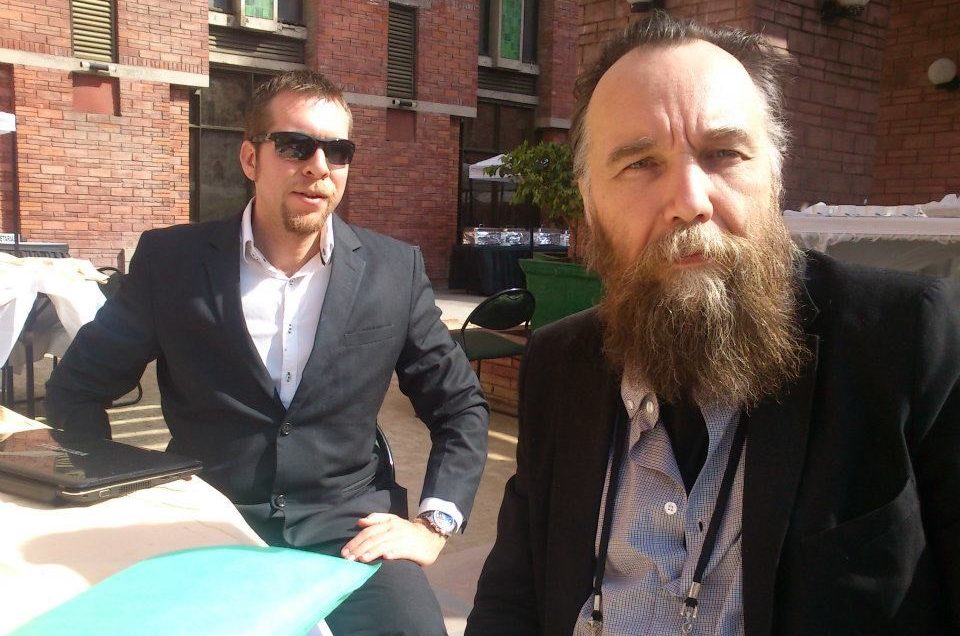
Arktos claims to have published over 150 titles in 14 languages since its founding. Whilst the majority of the works stocked by Arktos are by Western far-right figures like Evola and ENR authors such Guillaume Faye, the outlet also publishes titles by a number of Indian authors, such as the Hindu spiritual leader Ravi Shankar. Arktos also stocks including Tilak’s The Arctic Home In The Vedas. Carol Schaeffer, in her thorough piece for The Caravan magazine, quotes Morgan who stated that the publisher was so-named in order to invoke a “European tradition and ‘northerness’”.
Tilak’s work is also advertised on Greg Johnson’s Counter-Currents Publishing, where it is described as being based in a “painstakingly detailed analysis” that makes “a compelling case which is not easily refuted.”
By indulging in myths that recast whiteness as the indicator of superior or semi-divine origins, the young men of the alt-right can vicariously credit themselves, through their imagined ancestors, as architects of the world’s great civilisations, from ancient Egypt to Rome to Persia. They also place themselves above other races, who are portrayed as incapable of achievement.
The myth of a utopian and racially pure lost civilisation also provides an image of a glorious Golden Age, the essence of which the alt-right wishes to recapture. The aims of Counter-Currents are open: to “lay the intellectual groundwork for a white ethnostate in North America.”

One upshot of claiming Indo-European Aryan heritage is that it permits Western fascists such as Morgan (who has practiced the Hare Krishna religion) to frame their adoption of elements of Indian religious beliefs as a revival of their own cultural tradition. This has been especially appealing to followers of the pro-pagan, anti-Christian ENR, a vital ideological forebear of the alt-right.
Morgan has since left Arktos for Counter-Currents, an outlet established in order to “create an intellectual movement in North America that is analogous to the European New Right”. The “guiding principles” of Counter-Currents are rooted in Hindu concepts as interpreted by French philosopher René Guénon (1886-1951). “History is cyclical”, the Counter-Currents website states:
“We live in a Dark Age, in which decadence reigns and all natural and healthy values are inverted. Even in the depths of the Dark Age, there are hidden Golden Age counter-currents: survivals of the past Golden Age that sustain the world and serve as seeds of the Golden Age to come.”
Guénon is best known as the father of Traditionalism, a school holding that behind reality lies a metaphysical truth (Tradition), which is enshrined in the material world through various primordial spiritual creeds that enforce rigid religious and social principles, such as Hindu Vedanta (one of the six orthodox schools of Hinduism). Guénon adopted the Vedic concept of the yugas – four cyclical epochs of time, holding that humanity is passing through the Kali Yuga (or Dark Age), a time of spiritual estrangement from Tradition, during which the world will be destroyed and reborn into a new Golden Age.
Guénon was highly influential on Evola, who developed an unwaveringly hierarchical Traditionalism. Evola believed that ever since the Hyperborean Aryans left their Arctic homeland, humanity has been in a slow decline. Rejecting Christianity as a lowly, “Semitic” religion, Evola viewed Hinduism as rooted in untarnished Aryan traditions. The legitimacy of Hinduism was evident in its caste system, which Evola regarded to be “the embodiment of the metaphysical ideas of stability and justice”.
Unlike Guénon, Evola advocated direct attempts to usher in a new Golden Age. This philosophy led to his collaborations with Benito Mussolini and then with the Third Reich, which he once saw as potential vehicles for reinstating a Traditional caste system in Europe. Evola’s ideas ultimately fostered a cult of destruction and violence that would inspire far-right terrorism in Italy.
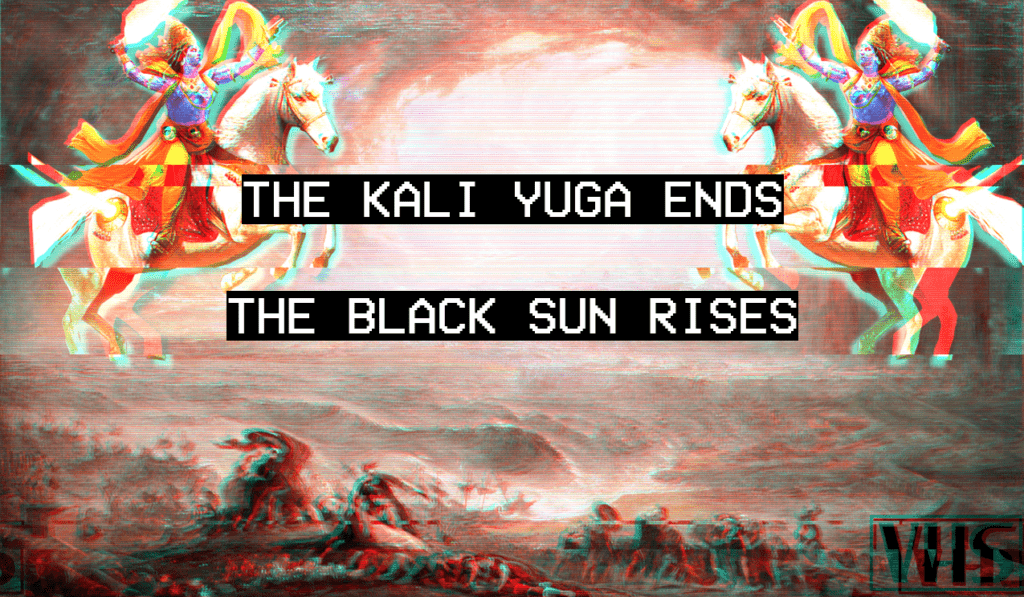
Evola is a major influence on the European New Right (ENR), the neo-reactionary movement and subsequently the alt-right. Key in spreading his influence is both Arktos Media and Counter-Currents Publishing, for whom publishing Evola is a central focus. As Blake Smith writes in the Los Angeles Review of Books, “the importance of Evola’s ideas to the emergence of the alt-right is difficult to overstate”.
Traditionalism interprets the onset of progressive liberalism as evidence of cosmic decline, and the reactionary struggle against it as a battle of good versus evil. As Dugin stated in a 2012 interview in New Delhi, published in Arktos’ 2014 edition of Dugin’s Eurasian Mission: An Introduction to Neo-Eurasianism: “We must create strategic alliances to overthrow the present order of things, of which the core could be described as human rights anti-hierarchy, and political correctness – everything that is the face of the Beast, the anti-Christ or, in other terms, Kali-Yuga”.
Both Guénon and Evola have been referenced by Steve Bannon, the former head of central alt-light outlet Breitbart News Network and former Chief Strategist to US President Donald Trump. In his 2017 biography Devil’s Bargain, Joshua Green reveals that as a young man Bannon adopted Guénon’s view of the Kali Yuga, coming to believe that globalism was destroying the remaining remnants of Tradition. In a 2014 speech at the Vatican, Bannon claimed that the present would one day be considered “a new Dark Age”.
Whilst it is unclear to what extent Bannon, a Catholic, has maintained his belief of cyclical ages, as Green points out, it is certainly true that Breitbart is obsessed with the decline of the West at the hands of liberals, immigrants and Muslims. To Morgan, the very fact that he would reference Guénon “indicates that on some level there is a very deep similarity between Bannon’s worldview and ours”.
At the February 2017 “Rising from the Ruins” conference, organised by Friberg (and named in apparent reference to Evola’s 1953 book), Jason Reza Jorjani, then Arktos’ editor, launched AltRight Corporation, a new organisation that aims to become a “Breitbart for the age to come, not the one that has passed”. Later that year, HOPE not hate secretly filmed Jorjani bragging that he was the alt-right’s “link man” with the Trump administration via Bannon.
Bannon has since endured a remarkable fall from grace, and the Iranian-American Jorjani has left both Arktos and AltRight Corporation to form the Iranian United Front, which aims to rid Iran of Islam and usher in an “Indo-European World Order”.
However, Bannon’s place in the history of the alt-right is assured. He continues to be active in global far-right politics, bringing with him a vision of Western decline, and a resolution to counter it with a global upsurge of like-minded radical populist and far-right movements.
Alt-right nazi Charles Zeiger opens a June 2016 article for the Daily Stormer thus:
“While India is now a brown mess, Aryans used to control the region thousands of years ago. They formulated a grand religion, which in a modified form is still practiced today by the inhabitants of the peninsula. Considering this, it’s only natural that Hindus today would come to worship Donald Trump as Kalki, the savior [sic] of humanity […] Interesting though that even other brown people hate Moslems though.”
The pseudonymous blogger is referencing Savitri Devi (1905 – 1982), a militant nazi zealot infamous for her blending of Hitler-worship with Hindu traditions into a new religion known as “Esoteric Hitlerism”.
Born Mazimine Portaz in France, Devi moved to India in the early 1930s. Drawing directly from Tilak, Devi embraced Hinduism as an authentic “Aryan” paganism and became obsessed with preserving the Aryan bloodline of Brahmins (members of the highest caste in the Indian system, made up of priests, scholars and teachers).
Devi came to view Hitler’s Third Reich as the rebirth of Indo-European, Aryan paganism in the western world, and believed that Hitler was in fact the penultimate avatar of Vishnu, sent to battle the demonic materialistic forces of the advanced Dark Age (which Devi calls the “reign of the Jew”). The untold misery caused by Hitler upon Europe’s Jewish population was in fact clearing the ground for Vishnu’s final incarnation, Kalki the Avenger. This notion handily reframes Hitler’s miserable failure as a spiritual triumph.
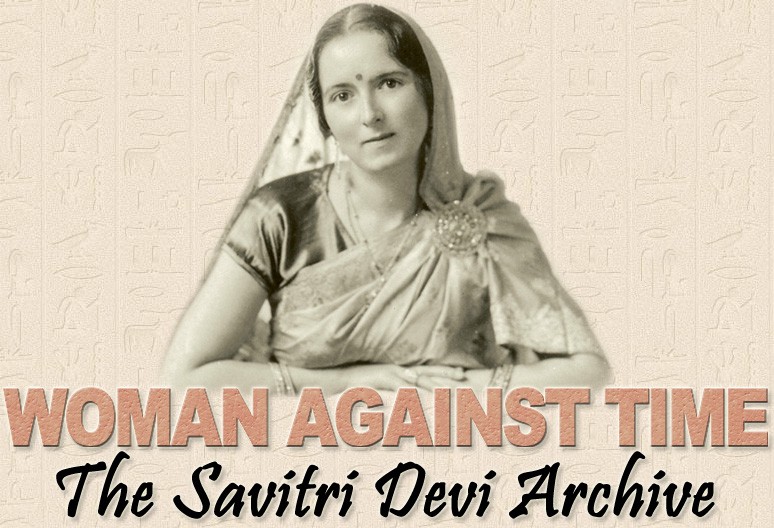
In the West no figure has done more to resurrect Devi in the 21st century than Greg Johnson, who found common ground with Devi in his sympathies to “National Socialism, Indo-European paganism, and the Traditional cyclical conception of history”. Alongside selling Devi’s books via Counter-Currents, Johnson also runs the online Savitri Devi Archive under the alias Dr RG Fowler.
Morgan has called his discovery of Devi a “revelation”, and through Goodrick-Clarke’s biography, Hitler’s Priestess, developed his fixation with Evola and Guénon. Devi’s works are now freely available on multiple alt-right sites, including the Daily Stormer. Her mythology has been frequently analysed on alt-right blogs; for example an article on the Occidental Dissent has wondered whether parallels between the myths of Kalki and Christ are signs of a “super-mind or racial soul among our people”.
Whilst the likes of Johnson may have a genuine intellectual interest in Devi, part of the alt-right’s novelty is its puerile sense of mischievousness and penchant for developing detailed, semi-ironic lore around obscure historical beliefs. Devi’s eccentricity, extremity and esotericism is ideal for 4chan-style meme culture, which operates in the alt-right’s favourite grey area between playful irony and genuine belief. For example, The Right Stuff writer Lawrence Murray has reimagined Devi’s ideas as “Esoteric Kekism” (about which, he claims, he is “only half-joking”), replacing Hitler with Pepe the Frog as an avatar of Vishnu. Richard Spencer, as Zeiger, has jokingly deified Trump as an incarnation of Kalki. As Blake Smith has pointed out, such tongue-in-cheek references to Devi’s ideas ultimately constitute a slow drip of de-stigmatisation around Devi and Hitler.
Whether done in sincerity or simply to “trigger” liberals, invoking Devi – as with Hyperborea and the Kali Yuga – deepens the mythos of the alt-right, providing a mystical sheen that can be alluring to budding internet theorists with an interest in taboo beliefs. As with the cult of Kek, by becoming fluent in the jargon and memes around this mythos, young men can also signal in-group status, helping to connect them to a movement bigger than themselves.
The ugly online bigotry of the alt-right, often aimed at ethnic Indians, is indicative of the fact that it is a movement comprised of dejected, angry white men desperate for status and identity. It can be incredibly powerful, therefore, to imbibe an Indo-Aryan mythology that connects white men to a “superior” bloodline with a glorious history, and the Kali Yuga and Kalki enable young internet dwellers to see themselves as quasi-religious acolytes fighting a transcendent battle against evil. The white ethnostate can be justified as a necessary in order to revive the “Tradition” of caste and protect the Aryan bloodline for a new Golden Age.
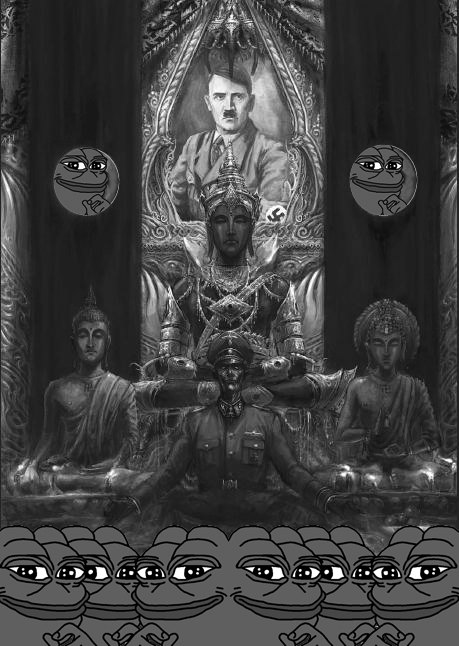
In a BBC Radio 4 profile of Devi her nephew, the left-wing journalist Sumanta Banerjee, claimed that “members of the present Modi-led BJP government have imbibed Savitri Devi’s ideology”, by which he means the desire for a Hindu rashtra (Hindu nation).
Whilst Devi’s memory has largely faded in today’s India, during the 1930s and 1940 Devi developed links to Hindutva leaders, who were sympathetic to Nazism due to a shared enmity towards Britain. Amongst Devi’s links was VD Savarkar, who infamously advocated treating Muslims as Hitler treated Jews.
A major force within Hindutva milieu during Devi’s time was the paramilitary Rashtriya Swayamsevak Sangh (RSS), from which the populist, democratic Bharatiya Janata Party (BJP) split in 1980. Narendra Modi’s populist BJP exploited antipathy towards Muslims to gain a stunning victory in India – the world’s largest democracy – in 2014.
Bal Gangadar Tilak is viewed as a forefather of Hindu nationalism, in part due to promotion of violent resistance against the Raj, but also because his theory that Aryans had authored the Vedas has enabled Hinduism to be interpreted as a racially Aryan religion, chiming with Devi’s view. The belief that India as an inherently Hindu country, and should remain so, is the official position of Modi’s BJP (although the notion that the Aryans invaded India from an external northern homeland is vigorously rejected by Hindu nationalists, who hold that the Aryans were indigenous to India).
The victory of Modi’s anti-Muslim populism, seen by journalists as a precursor to Trump’s 2016 victory, has won him support from amongst some far-right actors in the West. Bannon reportedly intended to establish a Breitbart office in India to support Modi’s anti-Muslim BJP (who Bannon has described as part of a “global revolt”).
Jorjani may brag about the alt-right’s links to Trump through Bannon. However, Carol Schaeffer has reported that Arktos’ management met with members of the BJP and RSS on at least two occasions. Whilst these meetings took place prior to the BJP’s election in 2014, attendees included Ram Madhav and Ravi Shankar Prasad, whom now occupy lofty positions in India’s ruling government. Schaeffer has also reported that Friberg has claimed to have “conducted over a hundred meetings with influential figures in India, including politicians, religious leaders and publishers.”
No matter how putrid the alt-right’s anti-Indian invective online, the relationship between the intellectual end of the movement and Modi’s party appears to extend beyond simply sharing certain ideological ancestors.
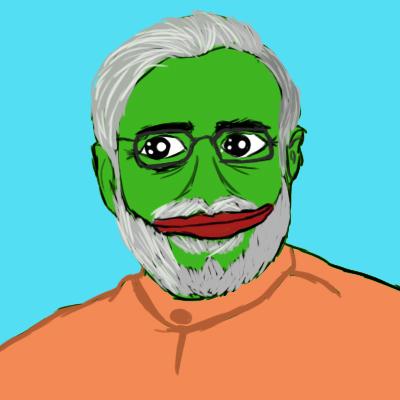

A Reform Party candidate fantasised about deporting “millions” of British citizens to “rid itself of the foreign plague we have been diseased with”. UPDATE: Reform…